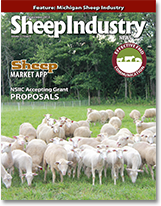USDA Serving Montana Ranchers, Farmers
By EDWARD AVALOS
Undersecretary for Marketing and Regulatory Programs
(Sept. 1, 2013) The U.S. Department of Agriculture (USDA) plays an important and vital role in supporting rural communities throughout the country. On my recent trip to Montana, I saw firsthand how the work, services and programs provided by the Animal and Plant Health Inspection Service (APHIS), Farm Service Agency (FSA) and Natural Resources Conservation Service (NRCS) directly impact stakeholder day-to-day operations.
After a listening session in Cut Bank, I was invited to the Rockport Colony, by Ben Hofer, the secretary for the Hutterite community near Pendroy, Mont. This impressive communal farming/ranching operation includes sheep, cattle, hog and poultry production, a dairy and meat-processing facility, as well as fruit, vegetable and grain production. I quickly learned USDA is an important partner, providing support for water lines, fencing and wildlife damage management.
Hofer explained how APHIS Wildlife Services helps reduce the colony’s livestock depredation: “Our colony was losing seven to eight sheep every night. At the time we were seriously considering getting out of the sheep business because we could not sustain losing ewes every night. Wildlife Services saved our sheep business.”
In addition to removing some predators, Hofer said, “Wildlife Services has assisted us to build electrified pens to put our sheep into at night to protect them from wolves and grizzly bears. They have placed livestock guard dogs on our colony to study how dogs can help protect our sheep and cattle.”
At Rockport, Wildlife Services’ National Wildlife Research Center (NWRC) is studying the potential for using a Turkish guard dog in areas with large carnivores. The Kangal, an early Mastiff-type breed, can grow to 34 inches and 145 pounds. Typical, smaller livestock protection dogs sometimes are no match for wolves and grizzly bears.
As grizzly populations recover, they are returning to their natural range on the prairie. Wildlife Services has assisted the Rockport Colony with building round pens for sheep to reduce losses during grizzly attacks. It has also captured depredating bears, as authorized by management agencies, and turned them over to the state wildlife agency for relocation or removal.
At USDA we are continuously looking for improvement, efficiencies and other methods for doing our job. A good example is the work underway by Wildlife Services and NWRC to use nonlethal methods to reduce depredation. My Montana visit was a welcome opportunity to hear from Tribal and faith-based communities, along with others, on how USDA can and is helping feed America.
See more at: http://blogs.usda.gov/2013/08/08/usda-serving-montana-ranchers-farmers /#sthash.3rMXsImp.dpuf.


